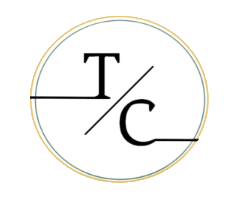Yellow Book Audit Vs Single Audit
Yellow Book Audit Vs Single Audit
A Yellow Book Audit is a specialized audit designed to assess the financial statements of an organization while also evaluating its internal controls and compliance with funding requirements and generally accepted accounting principles (GAAP).
Unlike a standard financial audit, a Yellow Book Audit is conducted under both Generally Accepted Governmental Auditing Standards (GAGAS) and Generally Accepted Auditing Standards (GAAS), ensuring a higher level of scrutiny, particularly for organizations receiving federal funding.
The term “Yellow Book” comes from the official government-issued guide that sets the standards for these audits. This guide outlines what constitutes a quality audit, the professional qualifications required for auditors, and the overall expectations for audit reports.
Because of its rigorous standards, nearly all audits mandated by the federal government must adhere to Yellow Book guidelines. This ensures that organizations receiving public funds manage them responsibly and comply with all applicable regulations. The audit analyzes compliance with laws and regulations, such as James Bond, looking for clues.

On the other hand, a Single Audit focuses on how federal funds are being used. The audit ensures that every penny is spent properly. A Single Audit is required if a non-federal entity spends $750,000 or more in federal funds during a fiscal year, whether those funds come directly from the government or are passed through another organization.
But here’s where it gets tricky: this isn’t based on individual grants but rather the total amount of federal money spent in a given year.
That means not every organization needs a Single Audit annually. One year, your federal spending might fall below the threshold, so no audit is necessary. If your grant expenditures exceed $750,000 the next year, you’ll need one. It’s a compliance safeguard to ensure federal funds are used properly, without waste or fraud.
Let’s say your small business receives federal grants for a project. A single will check how you spent that grant, while a yellow book audit analyzes every aspect of the grant.
FAQs
What are the 3 main types of audits?
The three main types of audits are financial audits, operational audits, and compliance audits.
- Financial Audits focus on an organization’s financial statements, ensuring accuracy and compliance with accounting standards like GAAP or IFRS.
- Operational Audits evaluate the efficiency and effectiveness of internal processes, identifying areas for improvement in operations and resource management.
- Compliance Audits assess whether an organization is following specific regulations, laws, or contractual agreements, especially important for businesses receiving federal funding.
What is the difference between the Yellow Book and the Red Book?
The Yellow Book and the Red Book serve different purposes in auditing.
- Yellow Book refers to the Generally Accepted Government Auditing Standards (GAGAS), used for audits of government entities or organizations that receive federal funding. It emphasizes accountability, compliance, and financial transparency.
- Red Book refers to the International Professional Practices Framework (IPPF), issued by the Institute of Internal Auditors (IIA). It focuses on internal audits within organizations, assessing risk management, governance, and control systems.
What are the 3 C’s of auditing?
The 3 C’s of auditing, Compliance, Controls, and Consistency, are key to conducting effective audits.
- Compliance ensures the organization follows relevant laws, regulations, and policies.
- Controls refer to internal mechanisms designed to prevent errors, fraud, and financial misstatements.
- Consistency ensures that financial and operational procedures follow a standard approach, making audits reliable over time.
What are the two main types of IT audits?
IT audits generally fall into two categories: general controls audits and application controls audits.
- General Controls Audits focus on broader IT security, infrastructure, data protection, and access controls. They assess how well an organization safeguards its information systems.
- Application Controls Audits dive into specific software or systems, ensuring data accuracy, proper authorization, and security measures for transactions within applications like accounting or HR systems.
What is the purpose of the Yellow Book?
The Yellow Book exists to set clear auditing standards for government agencies, nonprofits, and organizations receiving federal funding. It ensures audits are conducted with transparency, accuracy, and independence, holding entities accountable for how they manage public funds.
When to use the FIDIC Yellow Book?
The FIDIC Yellow Book is used for construction contracts where the contractor is responsible for both design and build. It’s commonly applied in infrastructure projects like roads, bridges, and energy plants where the employer (client) wants the contractor to handle both the design and execution based on performance specifications.
This contract type is ideal when the employer prefers less involvement in the design process and shifts more responsibility to the contractor, ensuring better cost and risk management.

